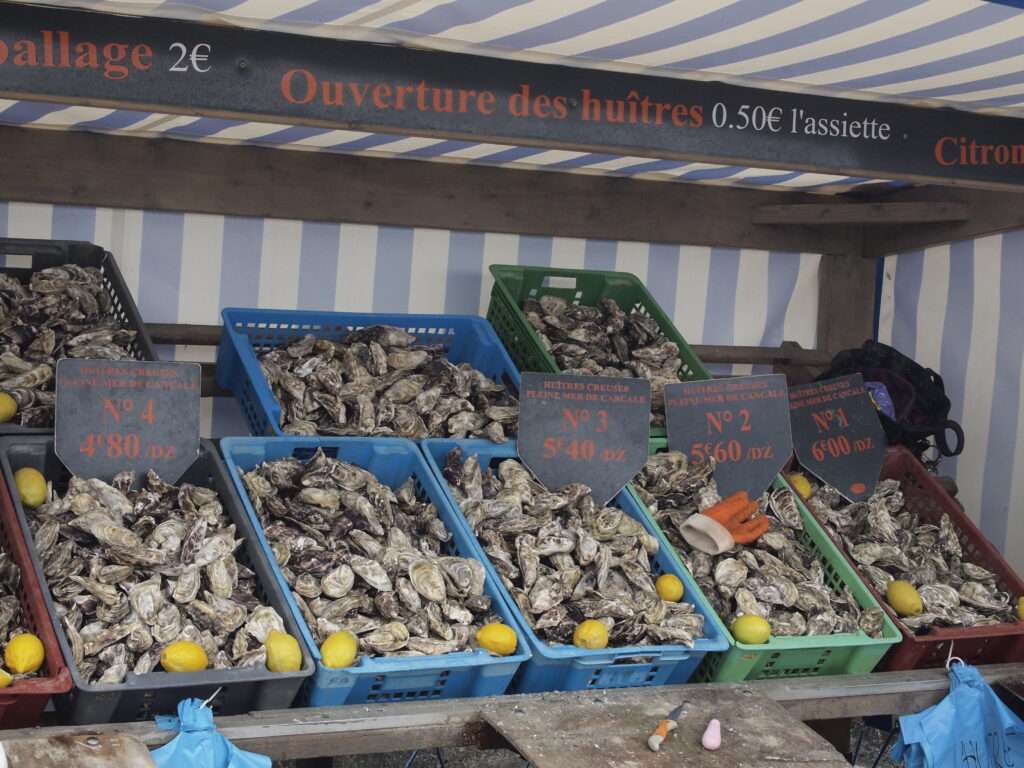Stephan Alleaume, a supervisor at the oyster farm of his family on Mont-Saint-Michel Bay (Brittany), France supervises his workers while they prepare Saint Kerber oysters that will be sent around the world. Speciales and Tsarkayas have been shipped to Germany, Singapore, Vietnam and Cameroon. These Japanese oysters, which were raised in Northern Europe’s cool waters, are loved by French Polynesia. They are shipped to all of the world’s best restaurants—except ones in the United States.
Seit 2010 a trade barrierIt has stopped European oysters and clams as well as mollusks being brought to America. Europeans are also prohibited from importing U.S. shellfish.
Alleaume said to me that they are ready for shipping in 2016, 2016. “And they, Americans, are ready to sale us their oysters.”
Alleaume may be done waiting. Early February saw the European Union (E.U.). Both the U.S. and European Union agreed to remove the trade ban in a gradual manner. This process was to begin at the month’s end.

Up until 2010, the trade between shellfish traders and fishermen across the Pond was fairly strong. Farms in Washington state, Rhode Island, and Massachusetts sent millions of pounds of clams to Spain—where they’re a staple in paella.
A difference in the E.U.’s method of testing shellfish led to the trade barrier. Both the U.S. and EU tested their shellfish. The E.U. tested the shellfish, while American regulators checked the water in which they grew. The E.U. tested actual shellfish, while American regulators checked the water where the shellfish were grown. E.U. officials were concerned that the oysters could bring disease to the U.S. The U.S. Food and Drug Administration (FDA), worried that oysters might bring norovirus and other pathogens into the U.S., banned all E.U. shellfish. European regulators also returned the favor.
Shellfish growers across the Atlantic have worked with trade reps to solve the problem since then. In 2015, the FDA and E.U. conducted audits due to delicate negotiations. The FDA and the E.U. recommended that food safety systems should be considered equal (though waters from which shellfish are sourced would still have to be free of sewage runoff). Although it’s easier for officials to act than for oysters, the official recommendation was not approved until the end of this year.
The ban on shellfish was implemented over 10 years ago and has had a significant impact on the industry. France GrippedWith major mortality due to the parasite that was brought into Australia from ship ballast water. Growers down under have learned how to grow resistant strains of the virus. New laws have been passed in the Chesapeake Bay Allowance to establish an aquaculture industryMaryland is where the parasites thrive, so Virginia researchers and growers made improvements to their breeding techniques that allowed for the creation of a stronger organism.

COVID-19 devastated oyster farms—burgers are a much more popular Takeout Customers had to choose whether they wanted raw oysters or a shucked product. But Robert Rheault, executive director of the East Coast Shellfish Growers Association, says the industry has bounced back to the point where those European markets may have to wait a year or so for the oysters planted now to grow—many farms are currently out of stock.
All bivalves won’t be allowed to travel immediately. Only Washington and Massachusetts will initially be allowed to ship their shellfish to Europe. Spain and the Netherlands, however, will soon start shipping to the U.S. If everything goes according to plan the floodgates for a complete shellfish trade will open.
Rheault who was involved in the decade-long negotiations says that “we have been assured the process for adding states and countries is going to be periodic and not the 12 year we have been waiting for FDA approval.” Rheault acknowledged that FDA’s “greatly in doubt” ability to respond quickly. He remains positive, especially considering the rising luxury-goods prices. Exotic and creamy oysters have retained their status as “food of Gods”.
American oyster farmers will benefit from the European market because there is a high demand during Christmas, when wild oysters are competing with farmed ones. Alleaume in France says that a free market will not make or break his company. Alleaume states that there will always be niche markets on both sides. You can survive with a niche market.

